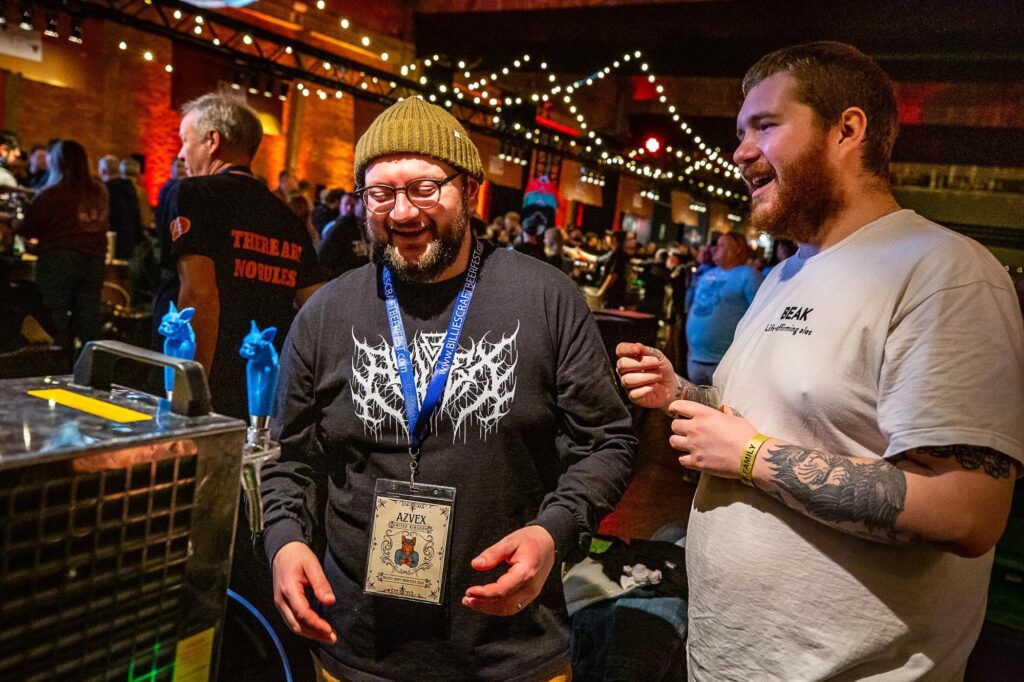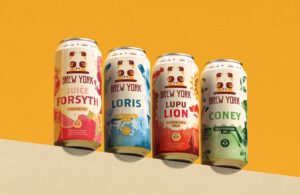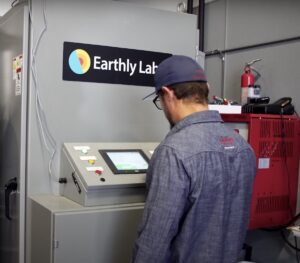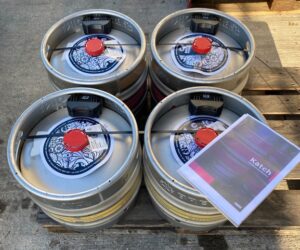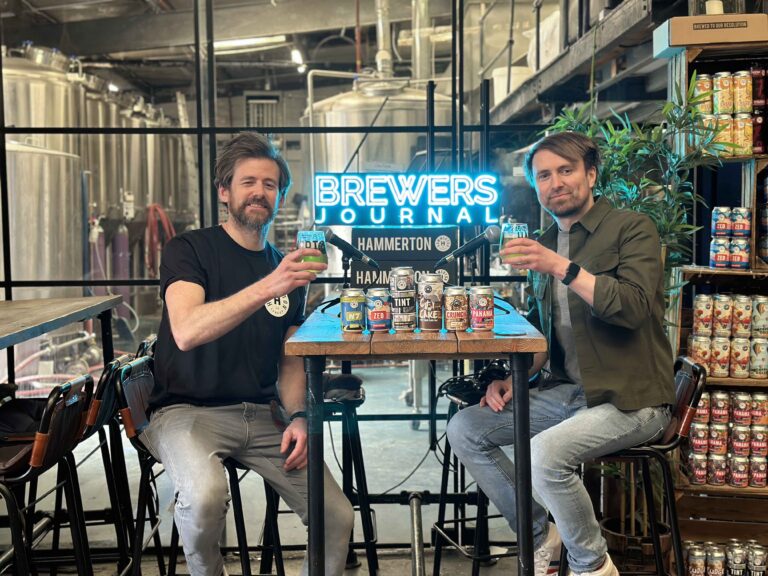As head brewer at Liverpool-based Azvex, Jack Walker is responsible for creating a raft of celebrated beers. Here’s how made his start in the world of beer and the breweries that helped him along the way.
I started home brewing at university. I won’t lie, the concept of cheap booze was a major driving factor.
At first, it was just a case of buying pre-hopped malt extract, some hot water, an included packet of yeast and some equipment bought from Wilkos.
As a biomedical science student, you’d think I may have a passing understanding of sanitation. Alas, I am fairly sure there were some false starts to my career.
After a few semi-successful ventures (read: just about drinkable) I decided I quite enjoyed this new hobby. Thus began a costly few years of building boilers, retrofitting fridges and a lot of experimentation.
It began with adding extra steps such as some steeped speciality grains, buying a higher quality yeast, or buying un-hopped malt extract.
I will never forget my first time buying a little 100g pack of hops from a local (unfortunately long defunct) homebrew shop in Hull.
I am fairly sure it was whole cones of Challenger in a little unsealed, unpurged, unlabelled bag and quite possibly brown around the edges. Despite the condition, they were a whole leap ahead of the pre-hopped worts.
Alongside making a mess of a student house kitchen, I had not forgotten to “research” as much about beer as I could.
There were a few little bottle shops around, mainly stocking Belgian, Dutch and German beer, along with some local real ales and I attempted to try as many as possible on a meagre student bursary.
One beer in particular always caught my attention, Schneider Meine Hopfenweisse. Something about the punch of exotic and new hops such as Mosaic and Citra, combined with banana and clove always sent my mind into overdrive. Somewhat inevitably, I wanted more and more intense beers.
What was pushing the limits? How tasty could beer get? Well, at the time that was the Belgian Quadrupel. The holy grail of the Quad was Westvleteren 12 and my first bottle of this godly (in a few ways) beer was another revelation.
By this point, I had moved onto all grain brewing in a converted coolbox, with drilled pipes for lautering and a big catering spoon as a mash paddle. I had a plastic fermenter as a boiler, with kettle elements and gaffer tape holding it all in situ.
It was rudimentary, but I finally had a good level of choice and control over processes. I was now at the point that designing a recipe and pouring over American home brew forums (they were miles ahead in info) and magazines was as fun as the actual brew day.
I was trying every big name hop on the market, pushing dry hop rates to a then boggling 10g/l of Nelson, Galaxy and Citra.
One beer in particular always seemed to be a huge point of discussion, Three Floyd’s Dark Lord. It was the combination of technical prowess, boundary breaking ABV and lots of adjuncts.
Double mashing, tonnes of sugar, a wallet emptying amount of yeast, vanilla and coffee and a patience testing maturation period. It was a dream for a nerd who brews.
I may have attempted this recipe far too many times, and I am sure my friends were sick of big roasty and intense beer being forced on them.
After I completed my degree, I had a very unfruitful experience of working for the NHS during a financial crash.
Budgets were slashed, and alongside it so were the behind the scenes staff. I found myself working at a supermarket, and to be honest, loving it.
I was on a management progression scheme and had a lovely team I worked with. I was always home brewing in the background and kept “researching” all the delicious beers I could.
A family friend opened a brewery, Brass Castle, locally and I got in touch with him/pestered to go help with some brew days.
At the time Phil Saltonstall et al were brewing on an old 1800s brew kit on Lord Halifax’s estate in East Yorkshire.
It was a truly bucolic scene of old brickwork, a copper kettle and mash tun and fields as far as the eye could see. It was my first experience of commercial brewing and I was truly in love.
Quickly, I was trying to spend as much time as I could with the Brass Castle gang and trying to learn as much as I could.
I then found an assistant brewers role at Hop Studio near York, and truly learned the art of cleaning casks for 8 hours a day! I cut my teeth and learnt the basics of production roles here. It was gruelling, sometimes very long, but I really enjoyed it.
A few years later I began working at Atom Beers in Hull, and found myself as the head brewer in a couple of years.
It was here I could start putting all the home brew experience into practice. One beer that sticks in my mind was Feynman Diagram, where we blended yeasts to push ester character to the forefront, perhaps trying to mimic those flavours I sought in those Hopfenweisses.
I still find joy in constantly tweaking recipes, trying new processes and constantly learning new lessons on how to get the best expression out of our ingredients.
Jack Walker
It was “double dry hopped”, which in my mind then meant mid-fermentation, and at the end. At that time, I don’t really think the industry knew what biotransformation was, but it was becoming the latest buzzword.
It was stupendously hazy and fruity, in hindsight our first NEIPA, perhaps. Another was Neutron Star, essentially my best take on a Dark Lords style high gravity, unctuous imperial stout with coffee and vanilla. It became a focal point of our release schedule for the next few years.
Many, many hours were spent hand waxing every bottle. At the time, I think we were one of very few breweries trying these big double digit abv beers, and I am still really proud of the time we spent trying to develop our recipes and process to create them.
Fast forward far too many years, and I was fortunate enough to join the team at Azvex Brewing in Liverpool in 2022.
Our modus operandi is hazy hops, big stouts and silly sours. It’s a fulfilling role making beer that still excites me.
We have a 4-vessel brew house, which allows for ultimate flexibility and control over a multitude of variables in the brewing process. Developing those recipes from years gone by, we make a big imperial stout pretty much quarterly, working with local suppliers for adjunct ingredients such as cacao, coffee, maple syrup and more.
Our grain bill is significantly different, and our OGs and FGs are a lot higher too, but the base fundamental concepts are those I began to learn at a home brew level.
Likewise, the fundamentals of our hoppy IPAs are still good basic brewing practice, but evolving how and when we use hops, our percentages of adjunct grains, and always focusing on quality markers such as dissolved oxygen and pH.
Currently, we are focused on biotransformation and the flavour impact from the interaction of yeast and hops, and we have some really silly 60%+ adjunct grain bills. Pray for our lauter tun.
I still find joy in constantly tweaking recipes, trying new processes and constantly learning new lessons on how to get the best expression out of our ingredients.
I’m happy to say I think we’re making the best beer I’ve made in my career so far. I may be a grizzled, baldy, beardy, grumpy Yorkshire brewer, but i’ll always have that eager-to-learn home brew spirit at heart.

